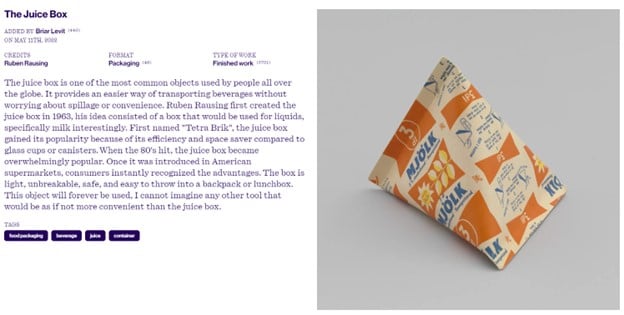Table of Contents
The People’s Graphic Design Archive is the first crowd-sourced archive of graphic design objects from all over the world, uploaded by users
An ambitious project was launched a few months ago: the People’s Graphic Design Archive is a freely accessible online resource that catalogues graphic design materials of all types: logos, fonts, adverts, posters, books, newspapers, wrapping paper and all types of packaging (including a tin of sardines), both finished works and rough drafts.
So far, so (fairly) normal. But the real novelty of this archive is that it is crowd-sourced from online users: graphic design aficionados, professionals, historians and students. The People’s Graphic Design Archive contains over 5,000 objects uploaded by thousands of users, and it is growing all the time. The only rule is that the objects must be at least ten years old, and the contents must be approved by moderators before being published.
How did the People’s Graphic Design Archive come about?
The idea of a virtual archive of graphic design materials came in 2014 to designer Louise Sandhouse, who today teaches at the California School of Arts. In an interview, the graphic designer describes how she realised while researching for a book she was writing how difficult it was to preserve many precious items that would have been lost forever within a few years.

This gave her the idea for a digital archive, although it took a few years to work out what form it should take. In the end, she opted for a collaborative archive: a major innovation in this field. A crowd-sourced archive is never complete, but it saves important pieces of graphic design that would otherwise be lost. The site’s motto is therefore ‘Preservation, not perfection’.
This kind of archive also presents alternative narratives and perspectives regarding the history of graphic design. According to Briar Levit, one of the archive’s curators, ‘documenting our own graphic design histories as a collective group will help us reflect on ourselves – all of us – not just the few that have been selected under conditions of privilege (race, gender, class, ability)’.
How the People’s Graphic Design Archive works: exploring the archive
One of the most enjoyable things you can do with archives like this is, of course, randomly explore it. This can be extremely useful for inspiring your work, although it does have some side effects: you risk spending more time then you ought to in the archive!
Here are some gems we unearthed:

Some fruit juice packaging and a tin of Coquiero sardines from Argentina. Some incredible flyers, including these for a Halloween party and one advertising a drag party.

A film poster for The Perfect Kiss by renowned US artist Barbara Kruger, a Chinese TV title sequence, the AC/DC logo produced by Californian type designer Gerard Huerta and a book on African alphabets (we’ve put a couple of extracts from it below).

There are various ways to explore the archive. To get started you can use the effective search function and look for keywords like ‘flyer’, ‘font’ or ‘packaging’, or let your imagination run wild with something like ‘Dracula’ or ‘music festival’. The alternative is to explore the archive through the various topics, i.e. the tags that categorise the items in the archive.

The topics include all sorts of things: from the names of designers, including some very well-known ones, to the format, geographical origin or subject of the item, such as typography or lettering.
Adding new objects: a way to reflect on graphic design
If, however, you fancy sniffing out and cataloguing graphic design objects yourself, a simple tutorial explains how to add new works to the People’s Graphic Design Archive: it involves registering on the site and filling in a straightforward form.
The most important part of the archiving process is photographing the item, which must be of the highest possible quality. The archive’s directors have therefore put together a series of hints and tips on how best to document the work you have in front of you (even when it’s only available for a few seconds). For example, they recommend photographing the whole object, rather than just picking the most conspicuous details, and looking for any credits or inscriptions that may reveal useful information such as the creator or the year of production. Essentially, you need to give the graphic design product its own place in history.
We reckon contributing to the People’s Graphic Design Archive could be a good way to start thinking historically about the graphic design objects we interact with daily in our work. Sometimes, stopping to think about the graphic design we consume can give us new perspectives on its meaning and on the appearance of whatever it is we are producing.
Why not involve students?
Finally, there are some particularly stimulating tips from the curators of the People’s Graphic Design Archive on where to find precious graphic design objects that deserve to be preserved in the archives. In particular, they recommend browsing charity and vintage shops, market stalls and auctions, for example, as well as museums, libraries, associations and local businesses.
There is also an entire section of the website dedicated to teaching. Graphic design students at any level could be involved in this fascinating research into the history of design and proactively contribute to preserving and cataloguing small, unique items.
How about you? Have you taken a look at the People’s Graphic Design Archive yet?

